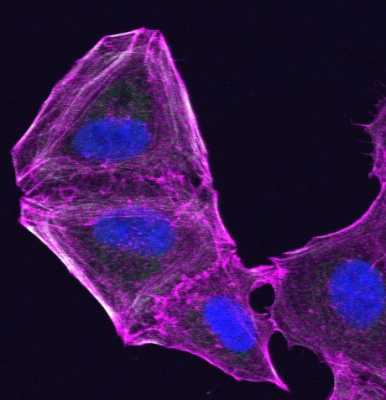
14 Jan Melanoma Cells Change Their Cytoskeleton to Evade Treatment
MedicalResearch.com Interview with:

Dr. Sanz-Moreno
Prof. Victoria Sanz-Moreno
Professor of Cancer Cell Biology
Cancer Research UK Senior Fellow and Cancer Research UK Werth Trust Fellow
Barts Cancer Institute- a Cancer Research UK Centre of Excellence
Queen Mary University of London
MedicalResearch.com: What is the background for this study?
Response: Malignant melanoma- a cancer of the skin- has very poor survival rates despite being at the forefront of personalised medicine. This is mostly due to therapy resistance.
Our current study indicates that melanoma cells escape anti-cancer drugs by changing their internal skeleton (cytoskeleton) – opening up new therapeutic venues for melanoma.

Melanoma Cells Change Their Cytoskeleton to Evade Treatment
MedicalResearch.com: What are the main findings?
Response: We find that cancer cells stop responding to both immunotherapies and drugs directed to the tumour’s faulty genes (mutations in the MAPK pathway) by increasing the activity of two cytoskeletal proteins : ROCK and Myosin II.
Our group had previously linked these molecules to the process of metastasis, but not to the poor response to anti-melanoma therapies. Our work highlights a strong link between metastasis and therapy resistance. And what is most important: the cytoskeleton is a key determinant of cancer aggressiveness.
MedicalResearch.com: What should readers take away from your report?
Response: An important take away message is that the melanoma cells use the same mechanism- changing their cytoskeleton- to escape two very different types of treatments. However, their new dependence on ROCK-Myosin II is a vulnerability. Combination therapy experiments on mice suggest that we can exploit this information in the clinic by combining ROCK-Myosin II inhibitors with existing anti-melanoma therapies”
MedicalResearch.com: What recommendations do you have for future research as a result of this work?
Response: Our pre-clinical work in mice suggest that the therapy resistant (or non-responding) tumours are now addicted to ROCK-Myosin II to grow. Blocking the ROCK-Myosin II pathway not only reduces cancer cell growth, but also reduces faulty immune cells (macrophages and regulatory T cells).
In the future, we would like to understand if the mechanisms operating in melanoma are also conserved in other aggressive tumours that do not respond to therapy.
MedicalResearch.com: Is there anything else you would like to add?
Response: An important finding from Dr Jose Orgaz, first author in the paper, was detecting increased Myosin II activity levels in resistant human melanoma specimens, which suggests its potential as a biomarker of therapy failure. Jose also found increased numbers of faulty immune cells in resistant human melanoma tissues. Those immune cells can contribute to the lack of therapy response.
Therefore we find that the cytoskeleton of cancer cells has strong immunoregulatory functions during cancer treatment.
No disclosure
Citation:
JOIN OUR EMAIL LIST
[mailpoet_form id="5"]We respect your privacy and will never share your details.
Last Modified: [last-modified]
The information on MedicalResearch.com is provided for educational purposes only, and is in no way intended to diagnose, cure, or treat any medical or other condition. Always seek the advice of your physician or other qualified health and ask your doctor any questions you may have regarding a medical condition. In addition to all other limitations and disclaimers in this agreement, service provider and its third party providers disclaim any liability or loss in connection with the content provided on this website.
Last Updated on January 14, 2020 by Marie Benz MD FAAD
